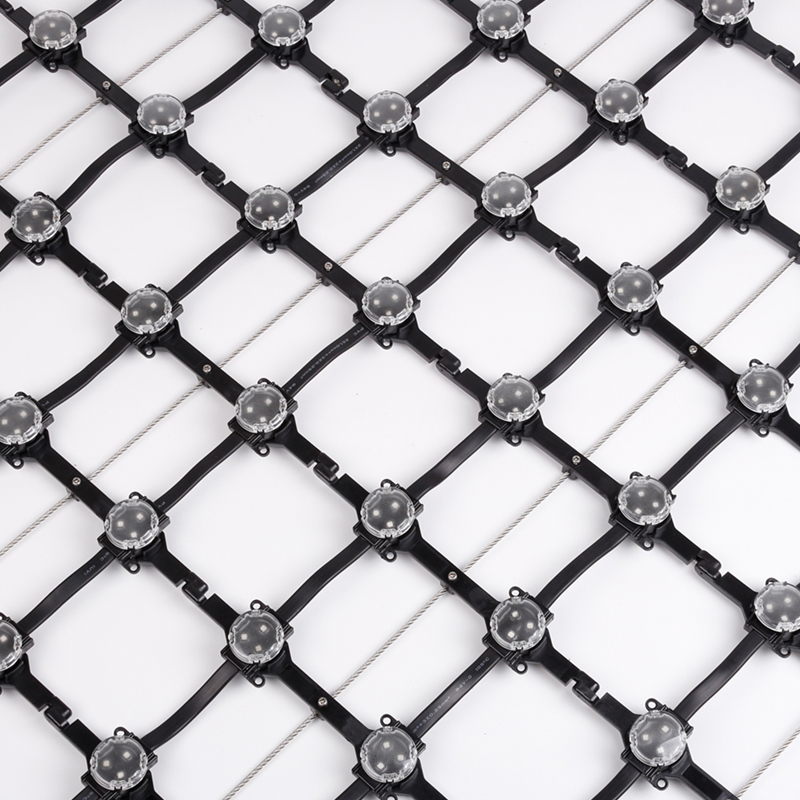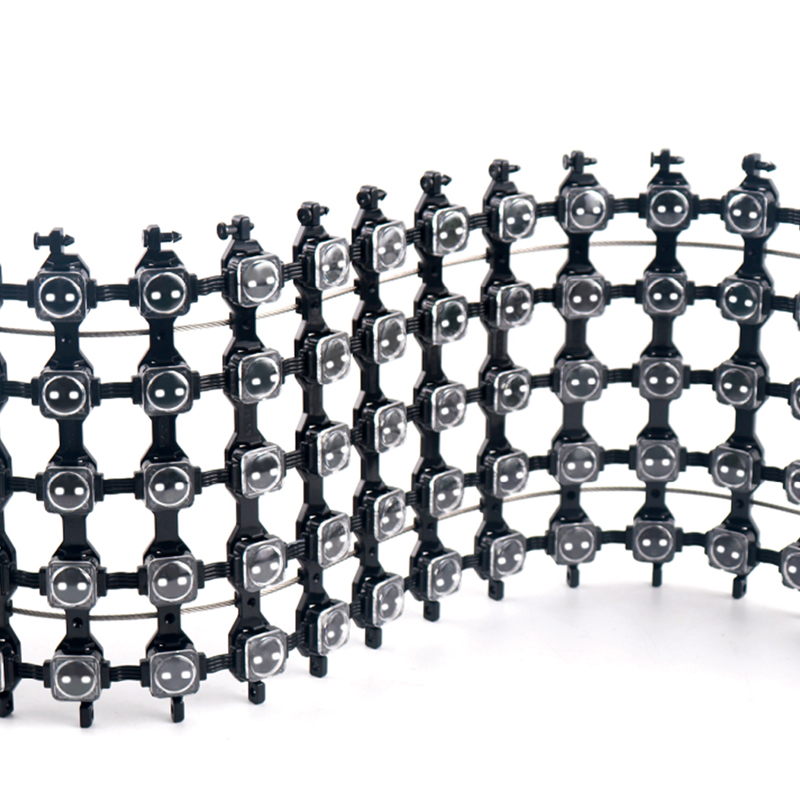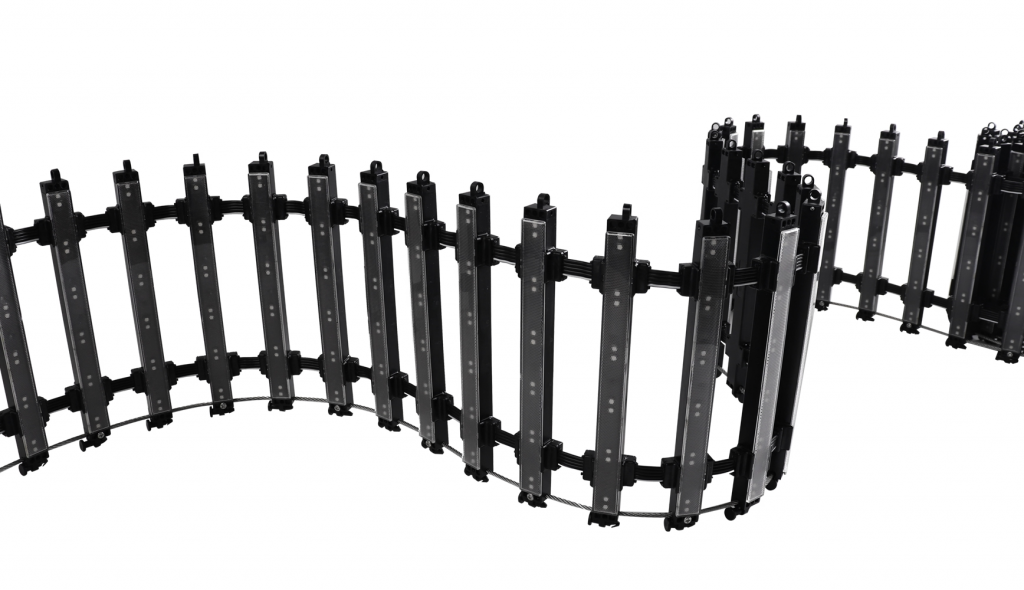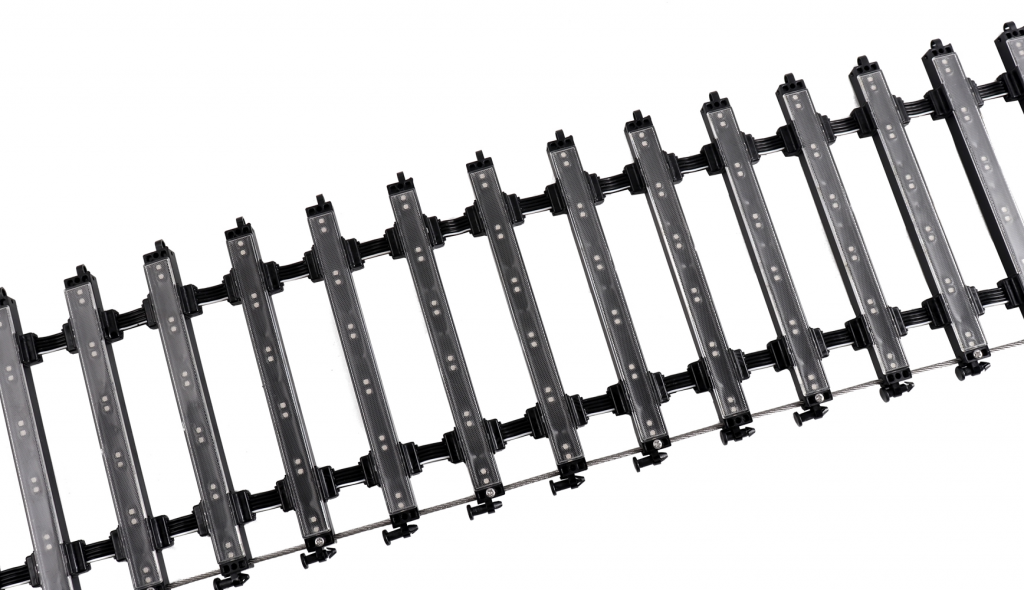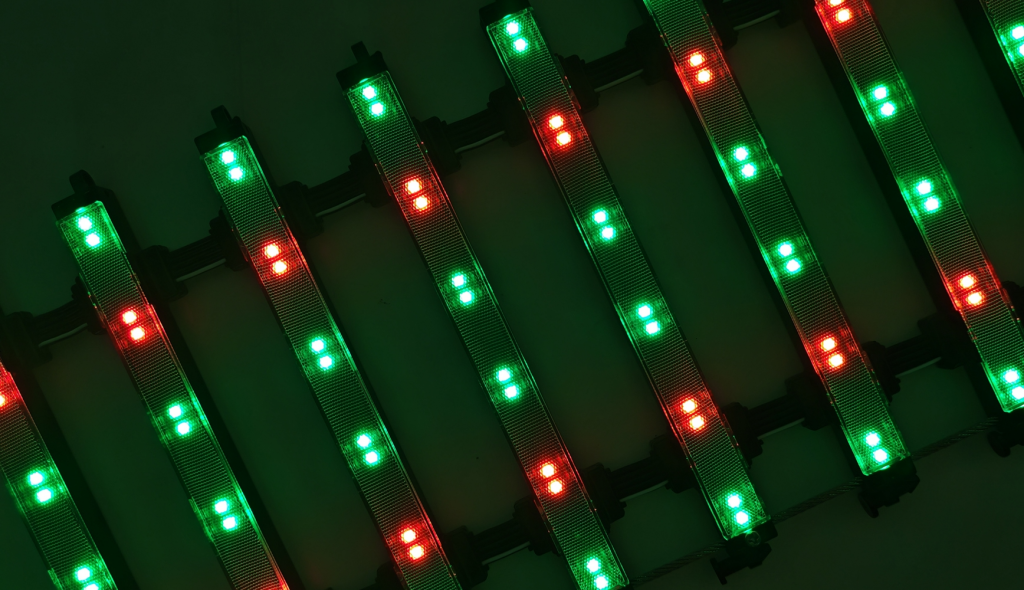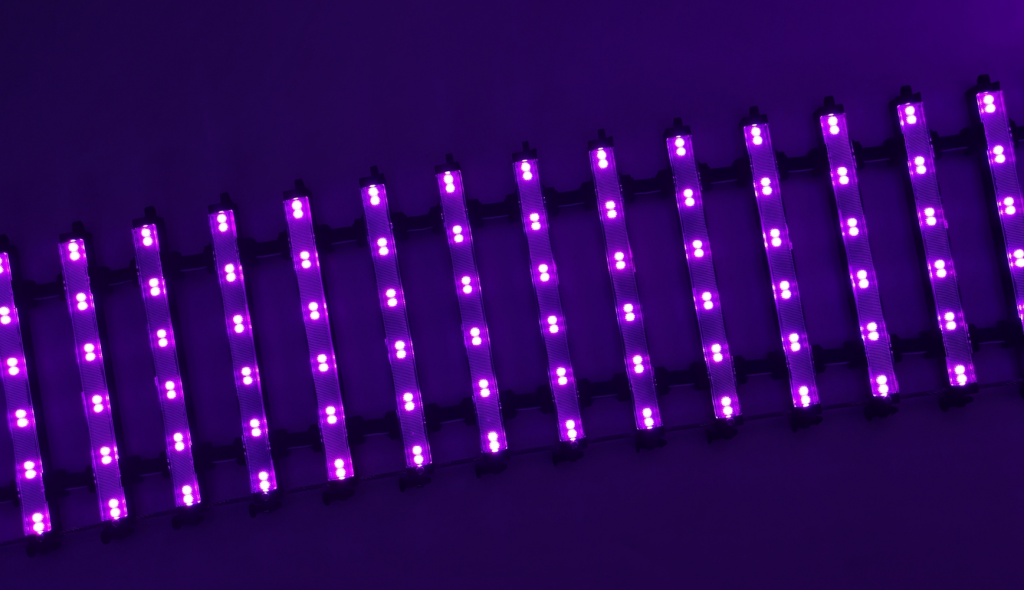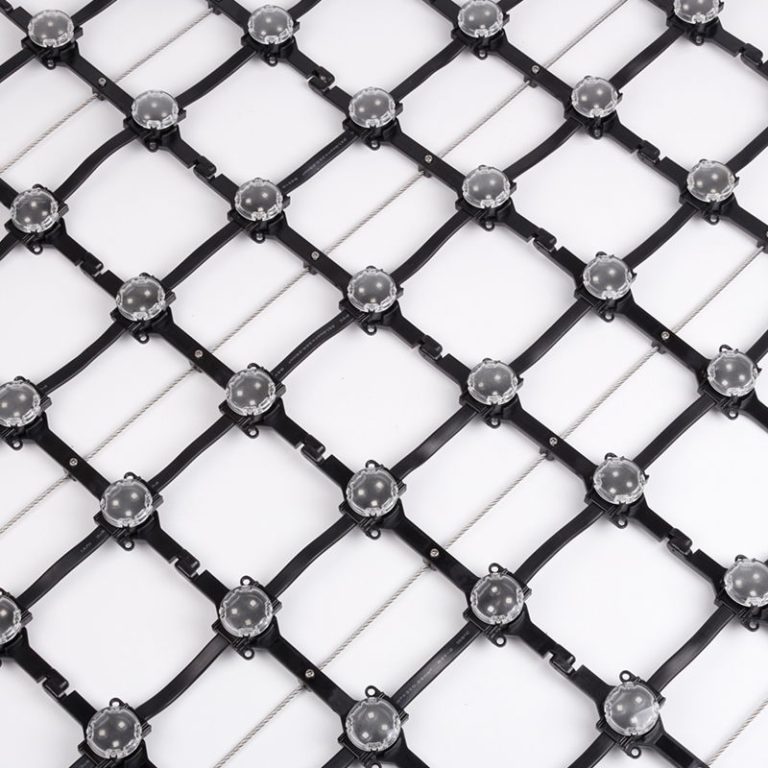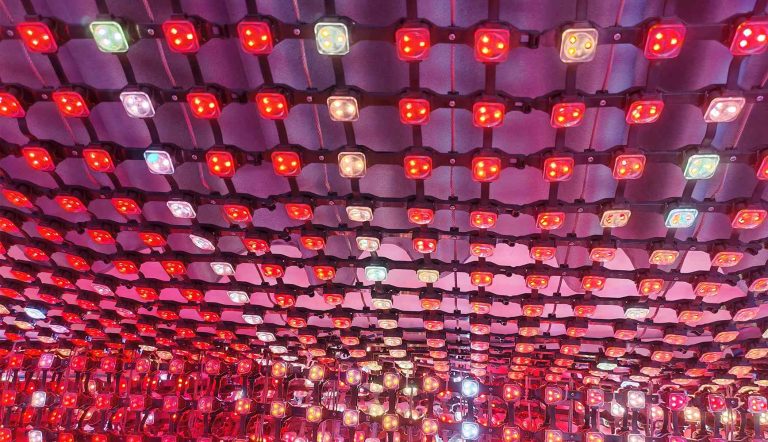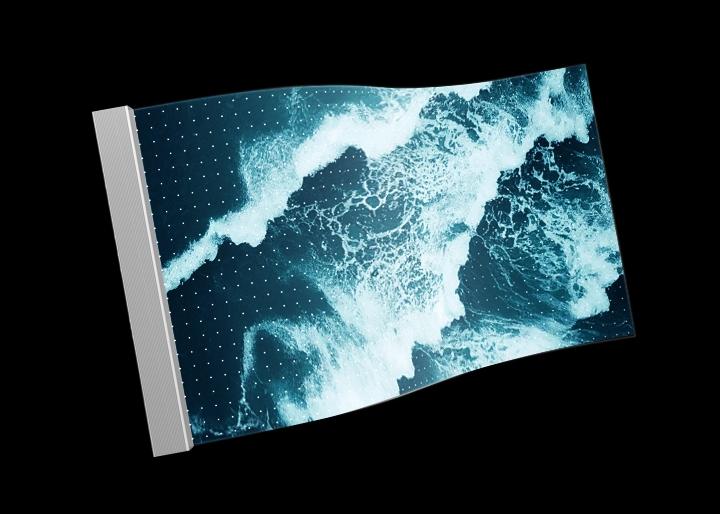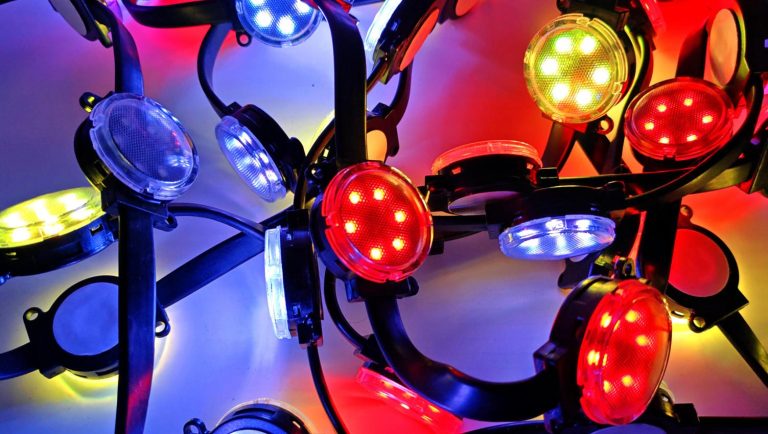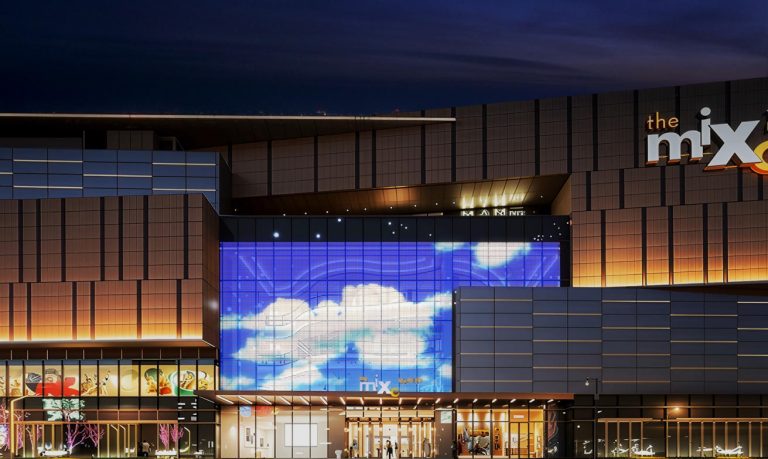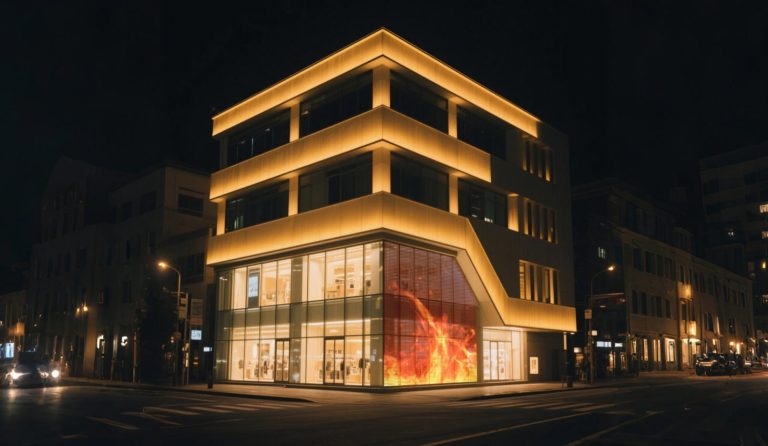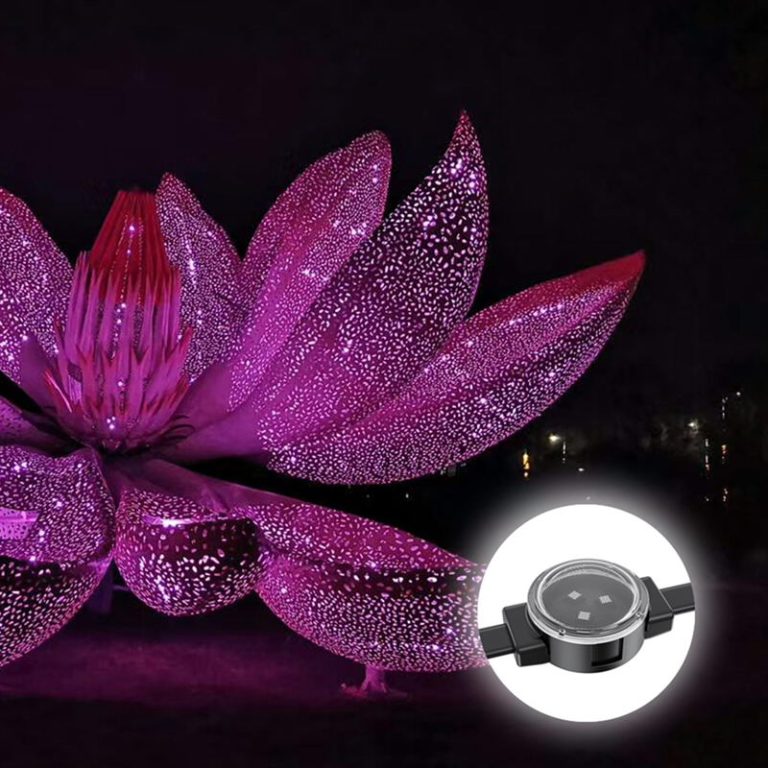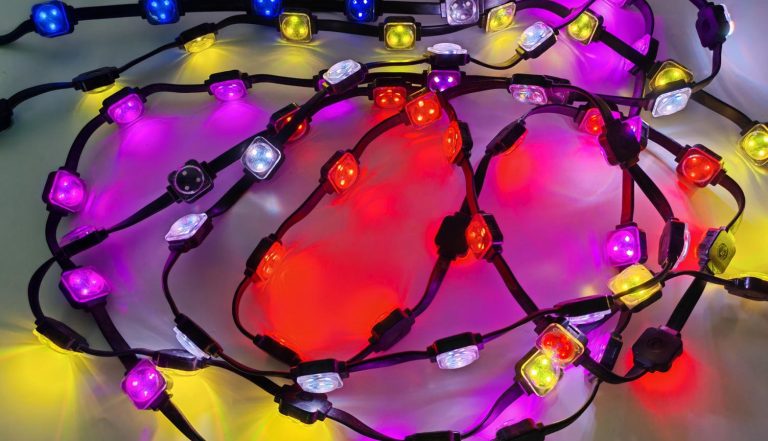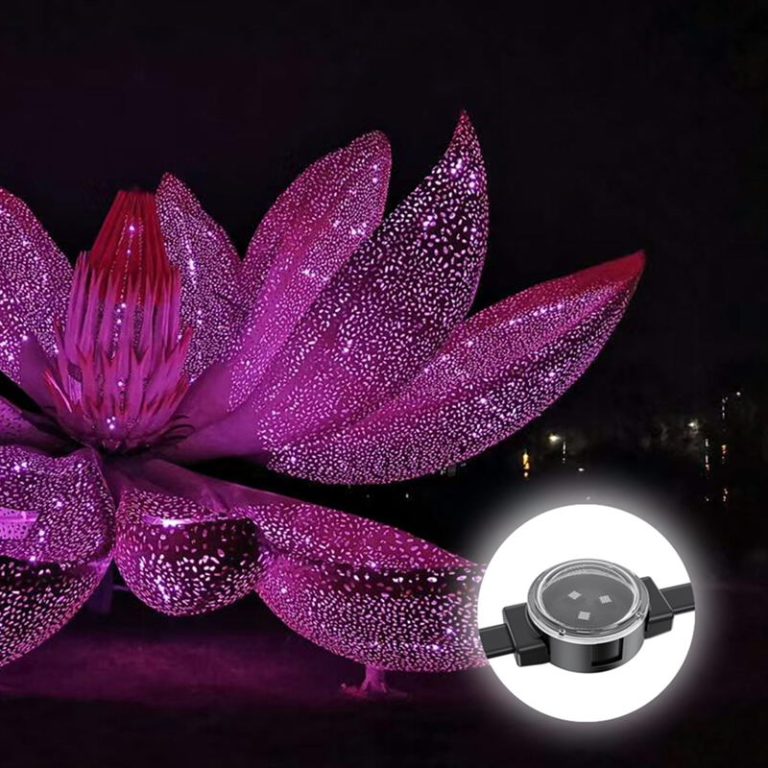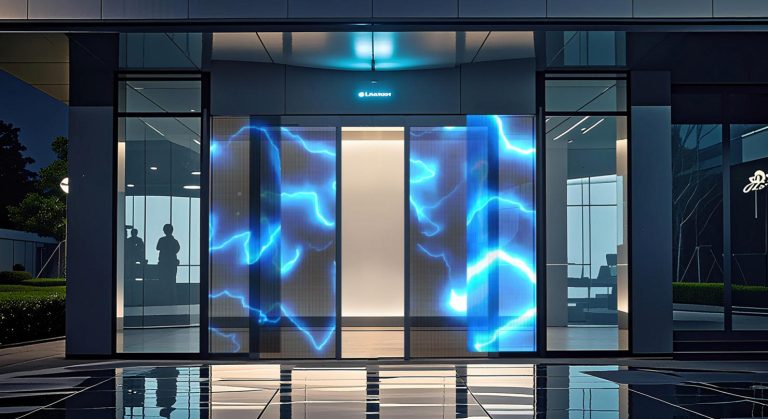Planning a dazzling outdoor display or sprucing up a building’s facade? You’re likely stuck at a fork in the road: should you pick an LED mesh screen that’s super see-through, letting light and views slip through like it’s barely there, or one with razor-sharp clarity that grabs attention with crisp details? It’s a tough call for architects, event organizers, and marketers. Choose wrong, and your project might fade into the background or overpower the space. Let’s break it down with real-world examples and tech know-how to guide you. By the end, you’ll have a solid grip on what’s best for your gig. Let’s dive in!
Why LED Mesh Screens Are a Big Deal
LED mesh screens aren’t your run-of-the-mill heavy displays. They’re light, grid-like setups with LED points that light up buildings, stages, or even curvy surfaces without blocking what’s behind. Think of them as a flexible stage for videos, ads, or art that can stand up to wind, rain, and sun. The big question? Transparency versus clarity. A see-through screen keeps things open and airy, perfect for glass walls where you want to keep the view. A high-clarity screen, though, packs more pixels for vivid images, great when details matter up close.
I’ve talked to folks who’ve messed this up—like putting a super-clear screen on a skyscraper only to find it looks blurry from the street. Yikes. Let’s dig into the details.
Exploring High Transparency LED Mesh Screens
High transparency means the screen lets tons of light and air pass through—think 70-90% see-through with top-notch models. Wider pixel spacing and slim builds make this happen by cutting down on bulk. Why’s this a win? It doesn’t mess with a building’s natural light or airflow. Picture a mall facade where shoppers inside still get daylight, or a concert stage backdrop that stays cool without extra fans.
Here’s what makes high transparency shine:
- Saves Power: Less material means they’re light (often under 3kg per square meter). This cuts setup costs and energy bills. They cool off naturally, no extra gear needed.
- Blends In: These screens fit right into the building’s look. On a glass wall, they practically disappear when off, keeping things sleek.
- Tough as Nails: With IP67 protection, they’re waterproof and dustproof, lasting over 30,000 hours even in rough weather.
From what I’ve seen in city projects, high transparency works best for cultural displays or ads where the screen shouldn’t steal the spotlight. For example, a city landmark might use a mesh with 100mm spacing for subtle animations that don’t overwhelm the structure. One catch? Wider spacing can make images look softer from far away. That’s not always bad if you’re going for a chill, ambient vibe instead of tiny details.
Getting the Scoop on High Resolution LED Mesh Screens
Now, let’s flip to high resolution. These screens use tighter pixel spacing—say, 50mm or less—packing more LEDs for crisp visuals. They’re your pick for detailed stuff like HD videos or intricate designs. Clarity here comes from pixels per square meter; more pixels mean sharper edges and bold colors, even up close.
Here’s why they stand out:
- Eye-Catching Visuals: RGB or RGBW colors deliver bright light (up to 7000cd), making content pop day or night.
- Flexible Control: DMX512 lets you program fancy sequences, syncing with music or events for a wow factor.
- Built to Last: Flame-retardant materials and IK10 impact resistance keep them going strong with minimal fade over time.
High resolution rules in entertainment spots or ad-heavy areas. Imagine a hotel lobby event with a mesh screen showing promo videos—with 62.5mm spacing, text and logos stay crystal-clear, grabbing attention without blur. But there’s a trade-off: tighter grids drop transparency to 50-70%, which can darken interiors or add weight (up to 6kg/m²). Not a deal-breaker, but something to think about in windy spots.
I heard about a trade show booth that went all-in on high resolution for a curved wall. The detail blew people away, but they had to adjust the density during setup to keep things cool. Little hiccups like that keep projects lively.
Striking the Right Balance: What to Consider
So, how do you pick? It depends on your project’s needs. First question: how far will people be from the screen? For far-off viewers, like on highway billboards, a see-through mesh with looser pixels does the trick. For close-up crowds, crank up the clarity.
Here’s a quick comparison to help you picture it:
| Feature | High Transparency Focus | High Resolution Focus |
| Pixel Spacing | 83.3mm – 125mm | 50mm – 62.5mm |
| Transparency Rate | 80-90% | 50-70% |
| Brightness (cd) | 2500-4000 | 5000-7000 |
| Weight (kg/m²) | 1.3-2.7 | 3.4-6.3 |
| Best For | Building facades, airflow priority | Detailed ads, close-up events |
| Power Consumption | Lower (60-100W max) | Higher (75-120W max) |
Here’s a rundown of other factors:
- Where’s It Going?: Outdoors? Go for IP67 and salt spray resistance, especially near the coast. Indoors? Clarity might matter more if ventilation’s not a big deal.
- What’s on Screen?: Simple logos? Transparency’s enough. Fast-moving videos? Clarity keeps things sharp.
- Setup and Budget: High-clarity screens cost more upfront but save on redoing content. Bolt splicing cuts labor time in half, so factor that in.
- Think Ahead: Modular designs let you tweak density later. Scalability’s key for future upgrades.
Oh, and don’t forget local rules—some cities limit brightness to avoid light pollution. I’ve seen projects where a quick mock-up saved headaches by catching issues early. Trial and error’s part of the game.
Success Stories: Projects That Nailed It
Real examples make it clearer. In a busy city square, a cultural display used a high-transparency mesh with 100mm spacing. It blended into the glass wall, showing tourism clips without blocking views. Transparency hit 85%, keeping the space vibrant. Power stayed low at 75W, and IP67 handled rainy days like a pro.
On the flip side, an event venue went high resolution with 50mm pitch. They ran HD ads for concerts, with 7000cd brightness cutting through stage lights. Transparency dropped to 60%, but the sharp visuals had attendees snapping pics left and right. Both projects matched their vibe: one subtle, one bold.
I’ve seen clever mixes too—high transparency up top, high resolution lower down. It’s all about finding that sweet spot.
Why XinHe Lighting’s Your Trusted LED Mesh Screen Partner
When hunting for a supplier, XinHe Lighting’s a standout. They kicked off in Shenzhen in 2004, mastering LED mesh screens and point lights. Their “Miracle Bean” brand holds over 80 patents, and they’ve earned high-tech enterprise status. Models like the G20 series, with flexible density and bolt-fix setups, or the K30 and H25 lines with IP67 protection and DMX control, fit everything from massive facades to cozy events. Their 6000m² factory, backed by ISO9001 and ISO14001 certifications, churns out gear built to last—think 30,000+ hour lifespans and flame-retardant builds. Their team’s got your back, too, with hands-on support from design to installation.
Wrapping It Up: Pick What Fits
Choosing between high transparency and high resolution for your LED mesh screen isn’t about one being better. It’s about what’s right for your project. Think about your location, content, and long-term plans. Nail the choice, and your display won’t just shine—it’ll steal the show. Not sure where to start? Check the specs, talk to experts, and maybe sketch a mock-up. Your perfect screen’s out there, ready to light things up.
FAQs: Quick Answers on High Transparency vs. High Resolution in LED Mesh Screens
What’s the biggest difference when choosing high transparency vs. high resolution for my LED mesh screen project?
A high-transparency screen lets more light and air through with wider pixel gaps, great for subtle installs like glass walls. High resolution tightens those gaps for sharper images, perfect for detailed content up close. It’s about whether you want a low-key vibe or bold visuals.
How does pixel spacing play into picking the right LED mesh screen for high transparency vs. high resolution?
Bigger gaps, like 100mm, boost transparency but soften details, ideal for far-off views. Smaller gaps, like 50mm, sharpen things up but cut transparency. For city ads, go tight; for open facades, spread it out.
Can I get both high transparency and high resolution in one LED mesh screen for my project?
You can, but it’s a tradeoff. A mid-range pitch like 62.5mm balances both. Suppliers can tweak designs, though nailing extreme transparency and clarity together is tough.
What should I think about for outdoor LED mesh screens when choosing high transparency vs. high resolution?
Weatherproofing’s huge—look for IP67 ratings. High transparency helps with airflow in hot spots. High resolution might need extra cooling. Near the ocean? Salt spray resistance keeps things durable.
How does cost factor into picking high transparency vs. high resolution for my LED mesh screen?
High-resolution screens cost more because of extra LEDs, but they save on reworking content. Transparent ones cut setup and power costs. Invest in quality—cheap screens fade fast, spiking long-term expenses.

